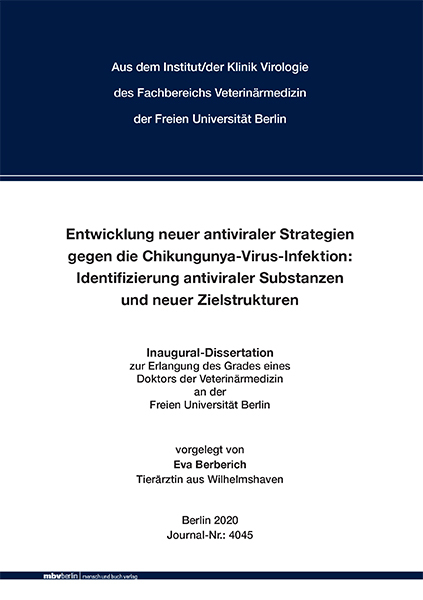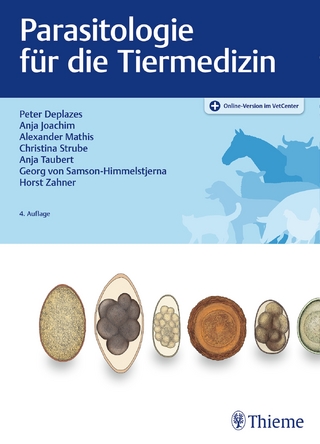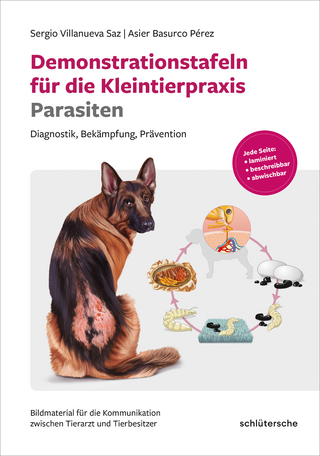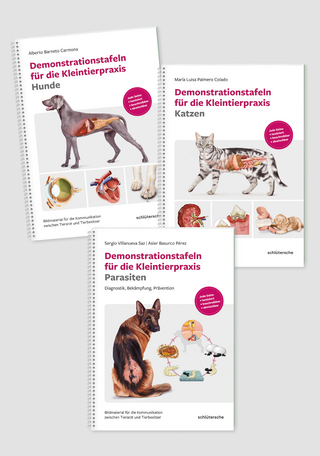
Entwicklung neuer antiviraler Strategien gegen die Chikungunya-Virus-Infektion: Identifizierung antiviraler Substanzen und neuer Zielstrukturen
Seiten
2021
|
1. Aufl.
Mensch & Buch (Verlag)
978-3-96729-097-4 (ISBN)
Mensch & Buch (Verlag)
978-3-96729-097-4 (ISBN)
- Keine Verlagsinformationen verfügbar
- Artikel merken
Development of novel antiviral strategies against a Chikungunyavirus-infection: Identification of antiviral substances and novel targets
The Chikungunyavirus (CHIKV) is a mosquito-transmitted Alphavirus that causes chikungunya fever, with flu like symptoms, in humans. However severe arthritis may persist for several years after an infection in 30 % of the infected persons, which might lead to considerable economic costs during large outbreaks. CHIKV was first documented in Tanzania in 1952 and then spread in Africa, to Asia and currently to South America including the Caribbean islands. Temperate and cold regions are reachable due to an effectively adaptation to the Asian tiger mosquitos, globalization and climate warming. There is no specific treatment or licensed vaccine for chikungunya fever, making it important to find an effective means preventing or combating a chikungunya infection. CHIKV is a (+)-single stranded-RNA virus which enters cells by receptor-mediated endocytosis and a subsequent pH-dependent fusion step. CHIKV has two surface proteins, which are involved in the entryprocess. The glycoprotein E1 is a class II viral fusion protein, E2 mediates cell attachment and is further divided into three subdomains A, B and C. The domains are linked to each other via a ß-ribbon-connector, which contains an acid-sensitive region. The focus is on finding strategies to prevent the entry of CHIKV into human cells, by characterizing the function of the E2 protein in more detail. Additionally the important role of cell surface glycosaminoglycans (GAGs) for CHIKV cell attachment was studied. Previous work could show that cell surface GAGs promote CHIKV entry. Mutations in E2 domain A from cell culture adapted CHIKV further enhanced CHIKV binding to GAG expressing cells. Therefore Fc-E2-fusion proteins, consisting of the Fc-region of a human antibody and subdomains of the glycoprotein E2, as well as fusion proteins with mutations in the subdomain A, which are described above, were generated. Furthermore Fc-E2-fusion proteins were created, which lack the ß-ribbon-connector or contain only the β-ribbon-connector, to prove its role in the cell binding process. It could be shown, that subdomain C is without any binding ability. Subdomain A binds just in combination with the β-ribbon-connector to both cell types. The binding affinity to GAG expressing cells is much higher. Subdomain B in combination with the β-ribbon-connector showed a significant binding to GAG expressing cells, but the domain lacking the β-ribbon-connector could still weakly bind to both cell types. That implicates that the β-ribbon-connector of the CHIKV E2 protein regulates the GAG-dependent cell entry. Additionally domain B seems to be involved in the entry mechanism as well. Due to the mutation of the β-ribbon-connector at the position 166, which provided a positive charge displacement, the combination of domain A and mutated β-ribbon-connector had an increased binding activity on GAG-expressing cells. This generated fusion protein binds on GAG-deficient cells as well, although less than on GAG-expressing cells. Furthermore it could be ascertained that the N-glycosylation at the position 263 (β-ribbon-connector) has an inhibiting function on the cell binding. In summary the ß-ribbon-connector could be identified as the main binding structure of the CHIKV E2 glycoprotein and therefore it is a good candidate for antiviral drug development. Das Chikungunya Virus (CHIKV) ist ein positiv einzelsträngiges RNA-Virus der Gattung Alphavirus und wird über die antropophilen Moskitoarten Aedes aegypti und Aedes albopictus auf den Menschen übertragen. CHIKV breitet sich rasant global aus und führt zu großen Epidemien in Südamerika. Nicht zuletzt trägt die Globalisierung, die Nutzung des an die gemäßigten Klimazonen angepassten Vektors Aedes albopictus, sowie der steigende Reiseverkehr dazu bei.
Eine CHIKV-Infektion löst das Chikungunya-Fieber in Menschen aus und geht mit grippeähnlichen Symptomen einher, die nach etwa zwei Wochen wieder abklingen. Allerdings beklagen auch 30% der Betroffenen chronisch-rezidivierende Polyarthritiden. Die Erkrankung kann nur symptomatisch behandelt werden, da weder spezifische antivirale Medikamente, noch ein zugelassener Impfstoff vorhanden sind. Die Rezeptorbindung ist ein guter Ansatzpunkt um Medikamente zu entwickeln, da somit das Eindringen des Virus in die Wirtszelle verhindert wird.
Das CHIKV gelangt über Rezeptor-vermittelte Endozytose in das Zytoplasma der Wirtszelle, woran sich die Replikation und Herstellung neuer infektiöser Virionen anschließt. Für den Zelleintritt sind die Hüllproteine E1 und E2 verantwortlich, wobei das Glykoprotein E1 die Membranfusion vermittelt und E2 für die Rezeptorbindung zuständig ist. Das E2-Protein ist in die drei Domänen, A, B und C unterteilt, die untereinander über einen β-ribbon-connector verbunden sind. Es war nicht hinreichend bekannt, welche Bereiche des E2-Proteins, sowie welche zellulären Strukturen in die Virus-Zellbindung involviert sind. Auf viraler Seite wurden die E2 Domänen A und B als Zellbindungsdomänen bereits beschrieben. Glykosaminoglykane, die sich auf der Zellmembran nahezu aller eukaryotischen Zellen befinden, wurden für Alphaviren und auch speziell für CHIKV als zelluläre Bindungsstrukturen bereits identifiziert. In dieser Arbeit wurde die Zellbindung des E2-Proteins untersucht, indem die einzelnen Domänen und der β-ribbon-connector einzeln oder in Kombination miteinander als Fc-Fusionsproteine hergestellt und deren GAG-abhängige bzw. GAG-unabhängige Bindung an Zellen untersucht wurde.
Der β-ribbon-connector wurde als Haupt-Zellbindungsdomäne ermittelt. Vor allem in Kombination mit Domäne B zeigte er deutliche Bindung an GAG-exprimierende Zellen, die auch etwas schwächer in Kombination mit Domäne A ersichtlich waren. Es konnte auch eine Erhöhung der GAG-unabhängigen Bindung beobachtet werden. Durch die Mutation im β-ribbon-connectors an der Stelle 166, die eine positive Ladungsverschiebung zur Folge hatte, steigerte sich die Bindungsaktivität der Kombination Domäne A und mutierten β-ribbon-connector deutlich auf GAG-exprimierenden Zellen, sowie schwach auf Zellen, die keine GAG auf der Zelloberfläche besitzen. Weiterhin konnte herausgefunden werden, dass die N-Glykosylierung an Position 263 (β-ribbon-connector) hemmend auf die Zellbindung wirkt.
Durch eine Mutation, die eine Glykosylierung an dieser Stelle verhindert, konnte eine deutliche Steigerung der Bindungsaktivität auf GAG-exprimierenden aber auch an –nicht exprimierenden Zellen beobachtet werden. Der β-ribbon-connector konnte als Bindungsdomäne, die den GAG-abhängigen Zelleintritt steuert, identifiziert werden und dient somit als guter Kandidat für die Entwicklung antiviraler Medikamente.
The Chikungunyavirus (CHIKV) is a mosquito-transmitted Alphavirus that causes chikungunya fever, with flu like symptoms, in humans. However severe arthritis may persist for several years after an infection in 30 % of the infected persons, which might lead to considerable economic costs during large outbreaks. CHIKV was first documented in Tanzania in 1952 and then spread in Africa, to Asia and currently to South America including the Caribbean islands. Temperate and cold regions are reachable due to an effectively adaptation to the Asian tiger mosquitos, globalization and climate warming. There is no specific treatment or licensed vaccine for chikungunya fever, making it important to find an effective means preventing or combating a chikungunya infection. CHIKV is a (+)-single stranded-RNA virus which enters cells by receptor-mediated endocytosis and a subsequent pH-dependent fusion step. CHIKV has two surface proteins, which are involved in the entryprocess. The glycoprotein E1 is a class II viral fusion protein, E2 mediates cell attachment and is further divided into three subdomains A, B and C. The domains are linked to each other via a ß-ribbon-connector, which contains an acid-sensitive region. The focus is on finding strategies to prevent the entry of CHIKV into human cells, by characterizing the function of the E2 protein in more detail. Additionally the important role of cell surface glycosaminoglycans (GAGs) for CHIKV cell attachment was studied. Previous work could show that cell surface GAGs promote CHIKV entry. Mutations in E2 domain A from cell culture adapted CHIKV further enhanced CHIKV binding to GAG expressing cells. Therefore Fc-E2-fusion proteins, consisting of the Fc-region of a human antibody and subdomains of the glycoprotein E2, as well as fusion proteins with mutations in the subdomain A, which are described above, were generated. Furthermore Fc-E2-fusion proteins were created, which lack the ß-ribbon-connector or contain only the β-ribbon-connector, to prove its role in the cell binding process. It could be shown, that subdomain C is without any binding ability. Subdomain A binds just in combination with the β-ribbon-connector to both cell types. The binding affinity to GAG expressing cells is much higher. Subdomain B in combination with the β-ribbon-connector showed a significant binding to GAG expressing cells, but the domain lacking the β-ribbon-connector could still weakly bind to both cell types. That implicates that the β-ribbon-connector of the CHIKV E2 protein regulates the GAG-dependent cell entry. Additionally domain B seems to be involved in the entry mechanism as well. Due to the mutation of the β-ribbon-connector at the position 166, which provided a positive charge displacement, the combination of domain A and mutated β-ribbon-connector had an increased binding activity on GAG-expressing cells. This generated fusion protein binds on GAG-deficient cells as well, although less than on GAG-expressing cells. Furthermore it could be ascertained that the N-glycosylation at the position 263 (β-ribbon-connector) has an inhibiting function on the cell binding. In summary the ß-ribbon-connector could be identified as the main binding structure of the CHIKV E2 glycoprotein and therefore it is a good candidate for antiviral drug development. Das Chikungunya Virus (CHIKV) ist ein positiv einzelsträngiges RNA-Virus der Gattung Alphavirus und wird über die antropophilen Moskitoarten Aedes aegypti und Aedes albopictus auf den Menschen übertragen. CHIKV breitet sich rasant global aus und führt zu großen Epidemien in Südamerika. Nicht zuletzt trägt die Globalisierung, die Nutzung des an die gemäßigten Klimazonen angepassten Vektors Aedes albopictus, sowie der steigende Reiseverkehr dazu bei.
Eine CHIKV-Infektion löst das Chikungunya-Fieber in Menschen aus und geht mit grippeähnlichen Symptomen einher, die nach etwa zwei Wochen wieder abklingen. Allerdings beklagen auch 30% der Betroffenen chronisch-rezidivierende Polyarthritiden. Die Erkrankung kann nur symptomatisch behandelt werden, da weder spezifische antivirale Medikamente, noch ein zugelassener Impfstoff vorhanden sind. Die Rezeptorbindung ist ein guter Ansatzpunkt um Medikamente zu entwickeln, da somit das Eindringen des Virus in die Wirtszelle verhindert wird.
Das CHIKV gelangt über Rezeptor-vermittelte Endozytose in das Zytoplasma der Wirtszelle, woran sich die Replikation und Herstellung neuer infektiöser Virionen anschließt. Für den Zelleintritt sind die Hüllproteine E1 und E2 verantwortlich, wobei das Glykoprotein E1 die Membranfusion vermittelt und E2 für die Rezeptorbindung zuständig ist. Das E2-Protein ist in die drei Domänen, A, B und C unterteilt, die untereinander über einen β-ribbon-connector verbunden sind. Es war nicht hinreichend bekannt, welche Bereiche des E2-Proteins, sowie welche zellulären Strukturen in die Virus-Zellbindung involviert sind. Auf viraler Seite wurden die E2 Domänen A und B als Zellbindungsdomänen bereits beschrieben. Glykosaminoglykane, die sich auf der Zellmembran nahezu aller eukaryotischen Zellen befinden, wurden für Alphaviren und auch speziell für CHIKV als zelluläre Bindungsstrukturen bereits identifiziert. In dieser Arbeit wurde die Zellbindung des E2-Proteins untersucht, indem die einzelnen Domänen und der β-ribbon-connector einzeln oder in Kombination miteinander als Fc-Fusionsproteine hergestellt und deren GAG-abhängige bzw. GAG-unabhängige Bindung an Zellen untersucht wurde.
Der β-ribbon-connector wurde als Haupt-Zellbindungsdomäne ermittelt. Vor allem in Kombination mit Domäne B zeigte er deutliche Bindung an GAG-exprimierende Zellen, die auch etwas schwächer in Kombination mit Domäne A ersichtlich waren. Es konnte auch eine Erhöhung der GAG-unabhängigen Bindung beobachtet werden. Durch die Mutation im β-ribbon-connectors an der Stelle 166, die eine positive Ladungsverschiebung zur Folge hatte, steigerte sich die Bindungsaktivität der Kombination Domäne A und mutierten β-ribbon-connector deutlich auf GAG-exprimierenden Zellen, sowie schwach auf Zellen, die keine GAG auf der Zelloberfläche besitzen. Weiterhin konnte herausgefunden werden, dass die N-Glykosylierung an Position 263 (β-ribbon-connector) hemmend auf die Zellbindung wirkt.
Durch eine Mutation, die eine Glykosylierung an dieser Stelle verhindert, konnte eine deutliche Steigerung der Bindungsaktivität auf GAG-exprimierenden aber auch an –nicht exprimierenden Zellen beobachtet werden. Der β-ribbon-connector konnte als Bindungsdomäne, die den GAG-abhängigen Zelleintritt steuert, identifiziert werden und dient somit als guter Kandidat für die Entwicklung antiviraler Medikamente.
| Erscheinungsdatum | 16.04.2021 |
|---|---|
| Verlagsort | Berlin |
| Sprache | deutsch |
| Maße | 148 x 210 mm |
| Themenwelt | Veterinärmedizin ► Allgemein |
| Veterinärmedizin ► Klinische Fächer ► Parasitologie | |
| Schlagworte | Antiviral agents • Chikungunya virus • Chikungunya virus disease • Chikungunya-Virus-Krankheit • CHIKV • Disease • GAG • Glycosaminoglycans • Glykosaminoglykane • human gene expression • menschliche Genexpression • Mosquito-borne diseases • Mücken • Mücken-übertragene Krankheiten |
| ISBN-10 | 3-96729-097-2 / 3967290972 |
| ISBN-13 | 978-3-96729-097-4 / 9783967290974 |
| Zustand | Neuware |
| Haben Sie eine Frage zum Produkt? |
Mehr entdecken
aus dem Bereich
aus dem Bereich
Buch | Spiralbindung (2023)
Schlütersche (Verlag)
CHF 83,90
Buch | Spiralbindung (2023)
Schlütersche (Verlag)
CHF 249,95


